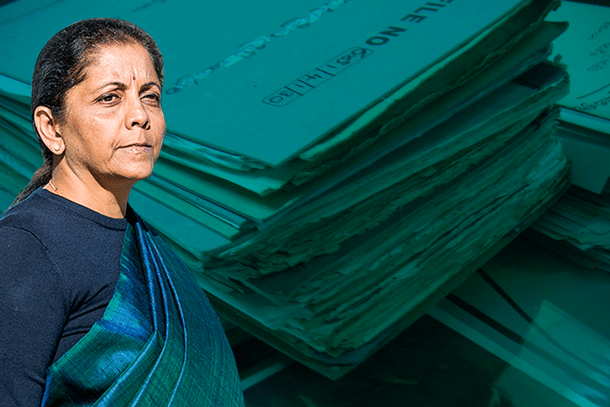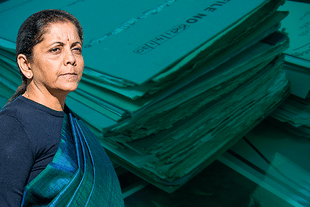Economy
GST Compensation For States Can't End Next June: The Case For A New 2-Tier Structure
R Jagannathan
Sep 20, 2021, 11:16 AM | Updated 11:13 AM IST
Save & read from anywhere!
Bookmark stories for easy access on any device or the Swarajya app.


The Finance Minister was right to point out at the last Goods and Services Tax Council meeting that the compensation for shortfalls in revenues will continue only until June 2022. However, this is not going to end the matter, for states will surely demand that the scheme should be continued beyond next June, since their revenues have taken a huge hit due to Covid and other factors.
While one can expect the opposition states to be most vociferous on this issue, the Narendra Modi government will find that its own state governments will also be on the same page as the non-Bharatiya Janata Party (BJP) governments on compensation. BJP or BJP-allied parties rule many of the poorer states, and they cannot do without the promised revenue growth.
Put simply, whether the law says it or not, the compensation scheme will have to be continued in some form or the other after June 2022. This means Nirmala Sitharaman and the Prime Minister need to prepare in advance for ensuring that this happens without a major political dust-up. The fiscal challenge is huge, as the compensation dues pertaining to the last fiscal year will continue to fester all the way to 2026, unless revenues suddenly spike for as yet unknown reasons.
Two factors need to be kept in mind while negotiating the next compensation scheme for the period beyond June 2022.
One, even though legally the Centre is not bound to guarantee 14 per cent annual revenue growth beyond next June, its moral obligation remains. The fact is states would not have agreed to pool fiscal sovereignty and sign up for goods and services tax (GST) without this revenue growth guarantee. This moral obligation will remain as long as GST does not, on its own, deliver in spades.
Two, there is, however, an equal moral obligation on the part of states to accept that the Centre’s resources are not endless, and if circumstances so warrant, some of the burden of revenue shortfalls will have to be borne by them too.
If these two factors are kept in mind and implicitly accepted by both Centre and states, forward movement is possible.
The question is, what kind of compromise will work for both Centre and states in the years beyond June 2022.
First, it should be possible to have a two-tier compensation structure, where there is a basic minimum revenue growth guaranteed (say, 8-10 per cent), after which additional revenues can be given to states based on how the overall economy is faring. An inflation-and-growth-linked compensation structure would be fairer to both Centre and states.
Second, the Centre could additionally agree to share a part of the revenues in earns from non-shareable resources like surcharges and cesses, which earn a considerable amount for the Centre.
Third, the states should, as part of this bargain, agree to levy GST on a wider range of products and services, and also for a simplification of the structure. States should also be evaluated for their ability to generate more revenues by better enforcement.
Fourth, compensation levels can also be tied to big scale disasters, which could include Covid-type situations, a big war, or very large country-wide natural disasters caused by climate change. If this had been part of the first GST compensation agreement, the heartburn would have been less. We need to provision for such unexpected calamities that affect everyone.
The Centre-state GST tangle is a tough one to solve, but not unsolvable if both agree to a give-and-take approach. The last thing a country just emerging from the depredations of Covid needs is for Centre and states to be at daggers drawn.
Jagannathan is former Editorial Director, Swarajya. He tweets at @TheJaggi.





